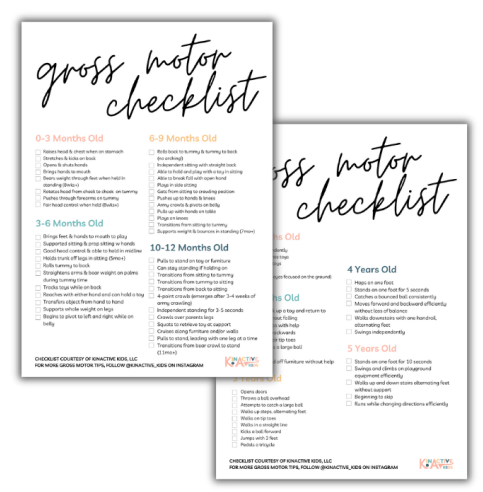Chiropractic Care for Cerebral Palsy: Enhancing Mobility and Quality of Life

Cerebral Palsy (CP) is a complex condition that significantly impacts a child’s movement, coordination, and overall physical function. Understanding the potential benefits of Chiropractic care for Cerebral Palsy and how it can empower parents and caregivers to make informed decisions about treatment options.
What is Cerebral Palsy?
Cerebral Palsy is not a single disorder but rather a group of disorders that affect muscle tone, movement, and motor skills. It results from abnormal brain development or brain injury, often occurring before, during, or shortly after birth. CP is recognized as the most common motor disability in childhood, affecting approximately 1 in 345 children in the United States.
The manifestation of CP can vary widely among kids. Some may exhibit mild symptoms, while others face significant challenges in mobility and daily functioning. By understanding the specific types of CP, parents and caregivers can better tailor interventions to meet individual needs.
Types of Cerebral Palsy
Cerebral Palsy is classified into four primary types based on the part of the brain that is affected and the resulting symptoms:
Spastic Cerebral Palsy
Spastic CP is characterized by increased muscle tone, leading to stiffness and tightness in the muscles. This rigidity can hinder movement, making tasks like sitting, walking, or reaching for objects particularly challenging. Children with spastic CP may have difficulty separating their legs when walking, often resulting in a scissor-like gait.
Dyskinetic Cerebral Palsy
Dyskinetic CP presents with uncontrolled movements, which can range from slow and writhing to rapid and jerky. This type of CP affects muscle control not only in the limbs but also in the face and tongue, complicating speech and eating. The muscle tone of those with dyskinetic CP can fluctuate dramatically throughout the day, creating further challenges in daily activities.
Ataxic Cerebral Palsy
Ataxic CP is primarily associated with balance and coordination difficulties. Individuals with ataxic CP may struggle with precise movements, making it hard to stand independently, walk steadily, or perform tasks that require fine motor skills. Their movements may appear shaky or unsteady, impacting their ability to engage in everyday activities confidently.
Mixed Cerebral Palsy
Mixed CP is a diagnosis given to individuals who exhibit characteristics of more than one type of CP. This complexity can make treatment and management more challenging, as different types may require varying therapeutic approaches.
The Role of Chiropractic Care in Managing Cerebral Palsy
Chiropractic care is a valuable adjunct to traditional treatments for children with Cerebral Palsy. The primary goals of Chiropractic care for Cerebral Palsy include enhancing mobility, reducing discomfort, and supporting overall neuromuscular function. Through gentle spinal adjustments and other muscular techniques, Chiropractors can help promote the body’s natural functional movements which helps regulate the nervous system.

Benefits of Chiropractic Care for Cerebral Palsy
1. Improved Mobility: Chiropractic adjustments can help alleviate restrictions in the spine and joints, potentially leading to improved range of motion and mobility.
2. Pain Management: Many children with CP experience discomfort due to muscle tightness or misalignment. Chiropractic care may provide relief through targeted adjustments and muscle techniques.
3. Enhanced Coordination: By improving nervous system function and muscle control, Chiropractic care can aid in better coordination, making it easier for children to perform daily tasks.
4. Supportive Care: Chiropractic care can complement other therapies, such as physical or occupational therapy, creating a holistic approach to treatment.
Techniques Used in Chiropractic Care for Cerebral Palsy
Chiropractors utilize various techniques tailored to the individual needs of children with CP. Here are some common methods:
Spinal Adjustments
Chiropractors examine the spine for misalignments or subluxations that could be contributing to discomfort or limited mobility. Using gentle techniques, they may perform spinal adjustments to help restore proper alignment and function.
Joint Adjustments
In addition to spinal care, Chiropractors may perform joint adjustments to correct dysfunction in areas like the hips, knees, or shoulders. This can improve joint function and reduce pain.
Muscle Release Techniques
Gentle muscle release techniques can help relax tight muscles and improve blood circulation, contributing to overall comfort and wellbeing. These techniques can also help manage spasticity, which is common in many children with CP.
Choosing a Qualified Chiropractor
When seeking Chiropractic care for Cerebral Palsy, it’s essential to find a practitioner with specific experience and expertise in this area. Here are some key factors to consider:
– Experience: Look for a Chiropractor with a solid background in treating pediatric patients, particularly those with neurological conditions.
– Collaboration: A good Chiropractor should be willing to coordinate care with other healthcare providers, ensuring a comprehensive approach to treatment.
– Approach: Inquire about the specific techniques and methods used, as well as their philosophy regarding pediatric care.
KinActive: A Resource for Families
At KinActive, we understand that every child develops at their own pace. We are committed to providing tailored support for children with Cerebral Palsy through a range of programs designed to enhance their physical development.
KinActive Kamp
Our specialized KinActive Kamp combines Physical Therapy and Chiropractic care to address the unique needs of children with physical, neurological, or genetic conditions. This program fosters a supportive environment for growth and development, allowing children to thrive.
KinActive Masterclasses
Our comprehensive library of masterclasses covers various topics, from helping your child crawl to mastering walking. These classes are designed to equip parents with the knowledge and techniques they need to support their child’s development at home.
KinActive University
For clinicians interested in improving their care in pediatrics, KinActive University offers resources and training on best practices in treating children with CP and other conditions. We also provide a database to help parents find qualified clinicians in their area who utilize our methods.
Conclusion
Cerebral Palsy presents a variety of challenges, but with the right support and interventions, children can lead active, fulfilling lives. Chiropractic care for Cerebral Palsy offers a holistic approach to enhancing mobility, reducing pain, and supporting overall wellbeing. If you’re considering Chiropractic care for your child with CP, reach out to a qualified practitioner who can guide you on this journey. At KinActive, we are dedicated to fostering your child’s growth and development, ensuring they are well on their way to achieving a healthy, balanced life.


